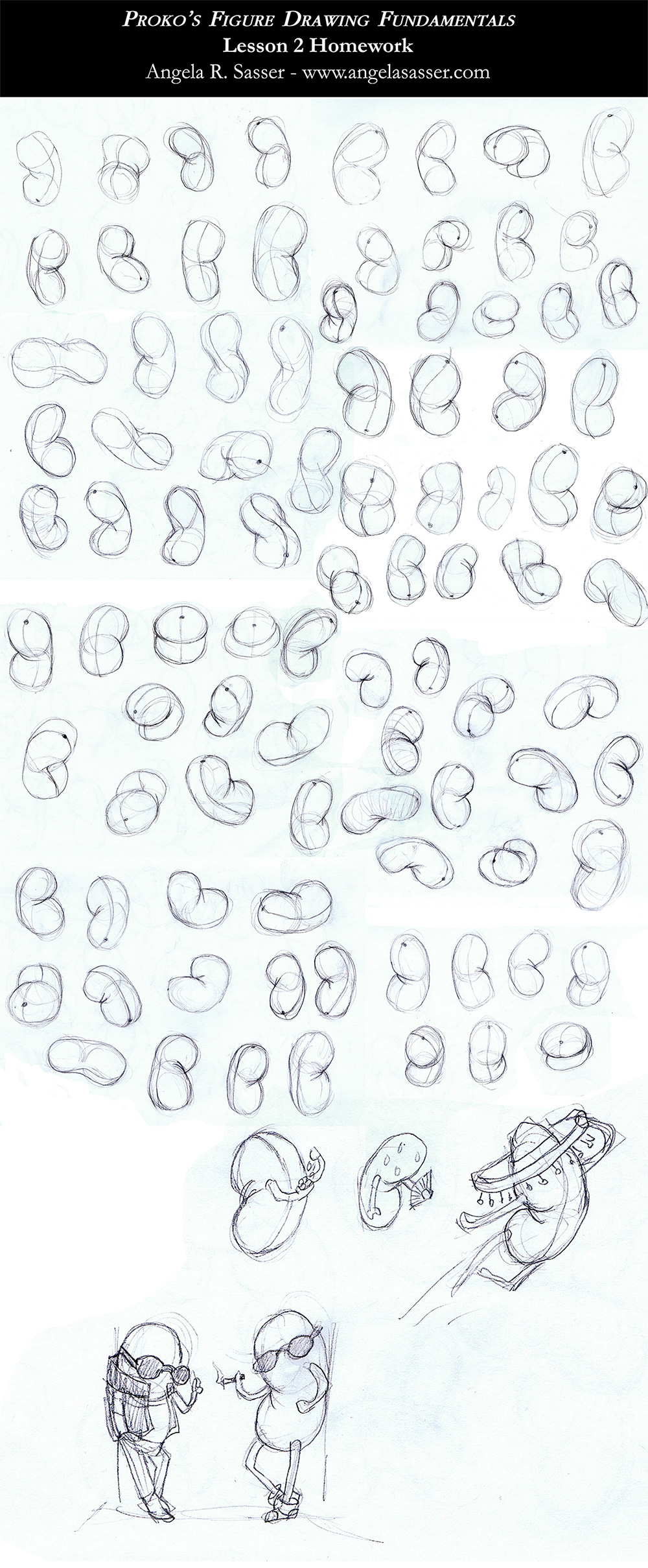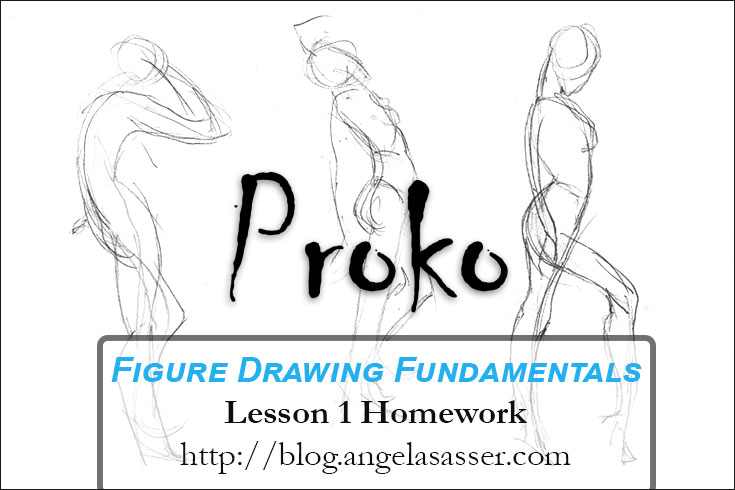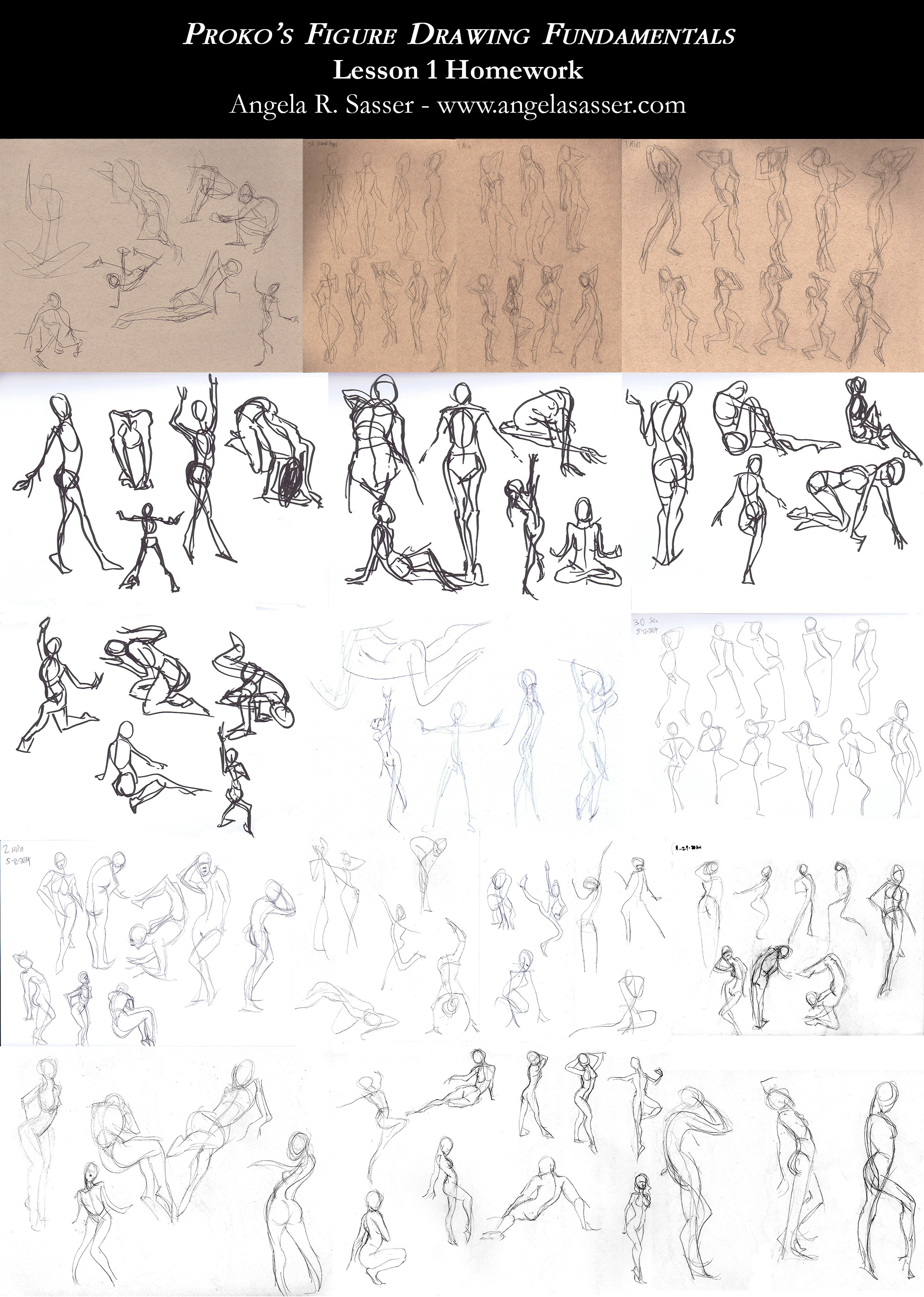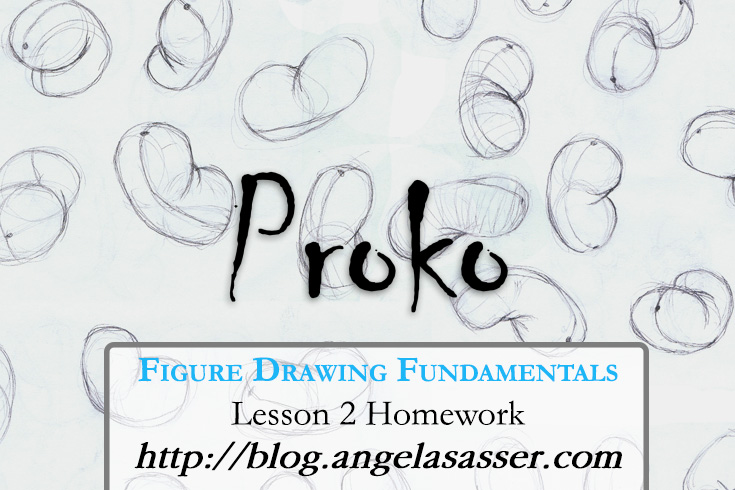
You can watch the free version of this lesson here!
However, the premium version is longer and more resources and examples are provided.
Beans, beans, BEANS! I’m continuing my lessons with Proko’s Figure Drawing Fundamentals class with the lesson on simplifying the motion of the torso. When I first saw this exercise, I kind of laughed to myself. What could a bean tell us about the torso? Wasn’t this too simple?
I wasn’t saying that later when I was about 70 beans in and I realized that there was so much more information being transmitted in this exercise than I realized. When a torso bends and twists, creases and tension are expressed in various ways. This is such a subtle lesson in physics that can really bring volume to your figure drawings! Here’s an example with a current work-in-progress of mine.
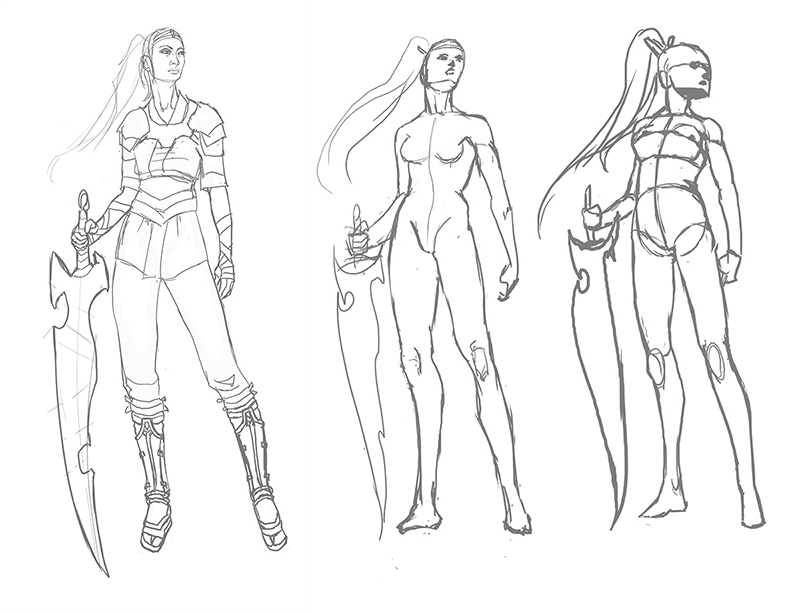
The first pose is very straight forward and also very stiff, while the second pose pushes the dynamism a bit more, but still seems so stiff. I employed the ‘bean’ method in the 3rd pose to try and capture the subtle twist and lean of the torso combined with the foreshortening of the lower camera angle. Already, the pose is looking much better and has more weight to it than the others, which didn’t quite pay respect to the physics of the torso.
And now the beans! Here’s a sketch dump of all of the ones I sketched for this lesson. I’ve been doing the recommended 100 sketches before moving on from a lesson.
The biggest challenge for me was figuring out how the creases turn when a torso is twisting. I have no advice on this issue except to practice and observe! Foreshortening, torsion, and eye level play a big part in what overlaps what and I am only scratching the surface of this concept, even after drawing this many beans.
I also believe that learning something so subtle as this requires practicing and drawing, rather than reading advice about doing it. It just kind of clicks in your brain when practicing, which is why I think in this case drawing numerous sketches like Proko recommends to be very useful (and essential)!
I’m definitely excited to move on to the Robo Bean, which is the next step up in complexity from this base form in a later lesson.
Of course, I couldn’t help having a little fun by the end of this assignment illustrating random bean puns. A cookie for you if you can guess which ones they are!
